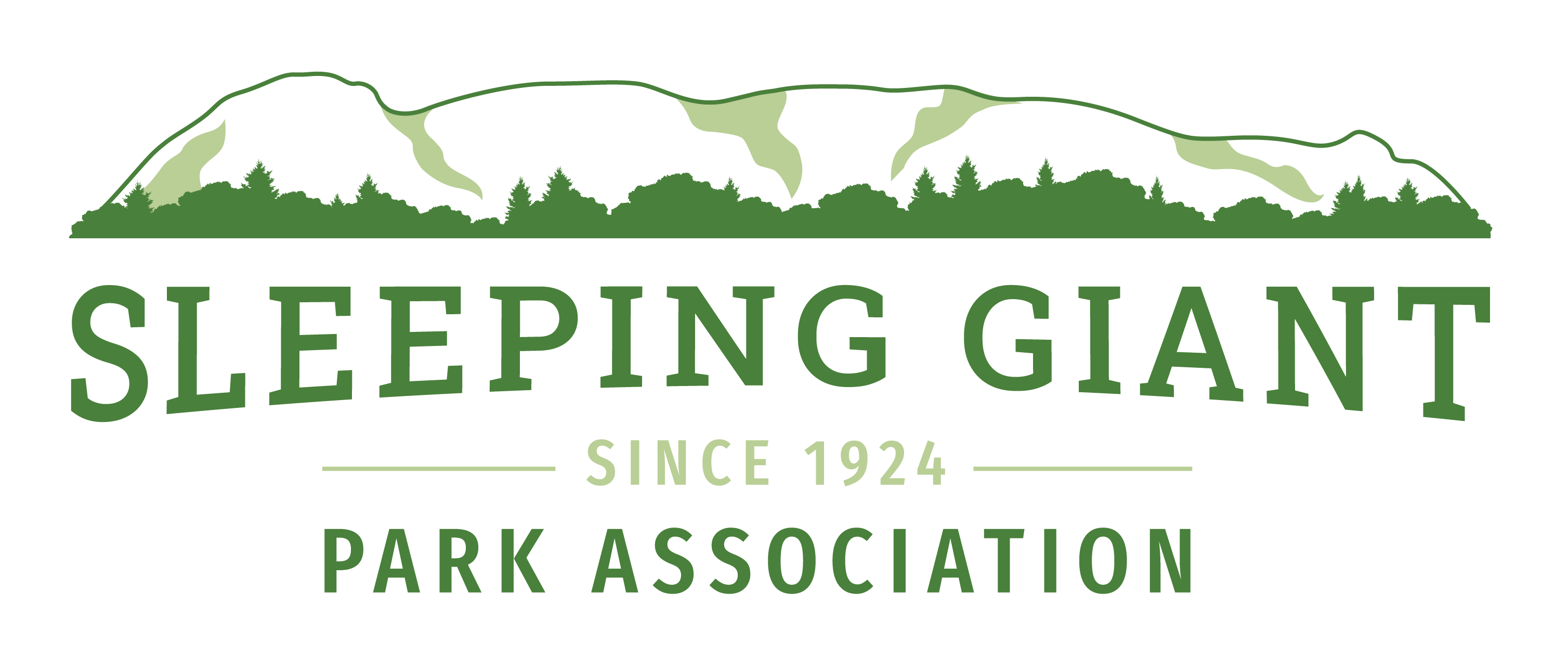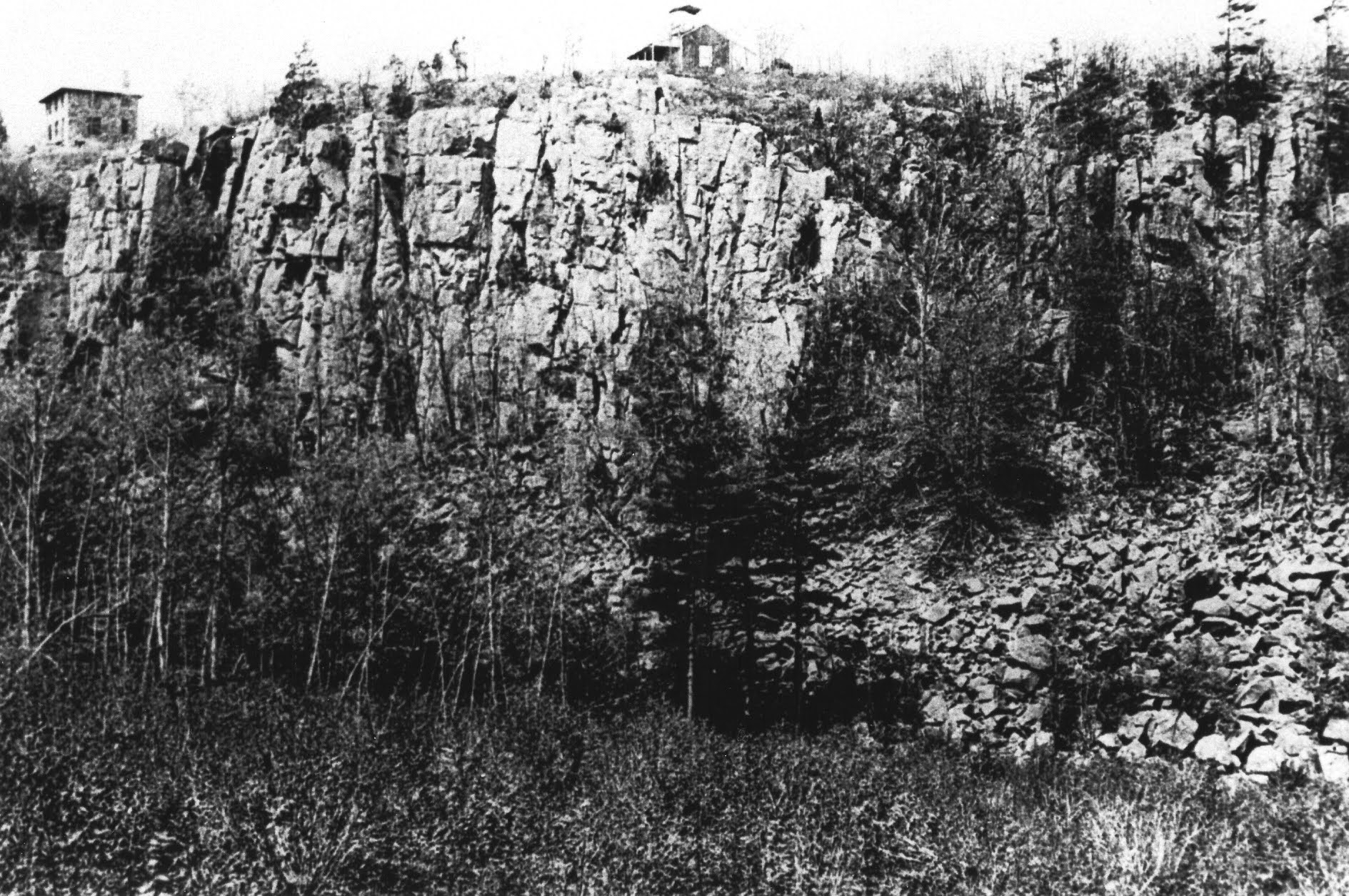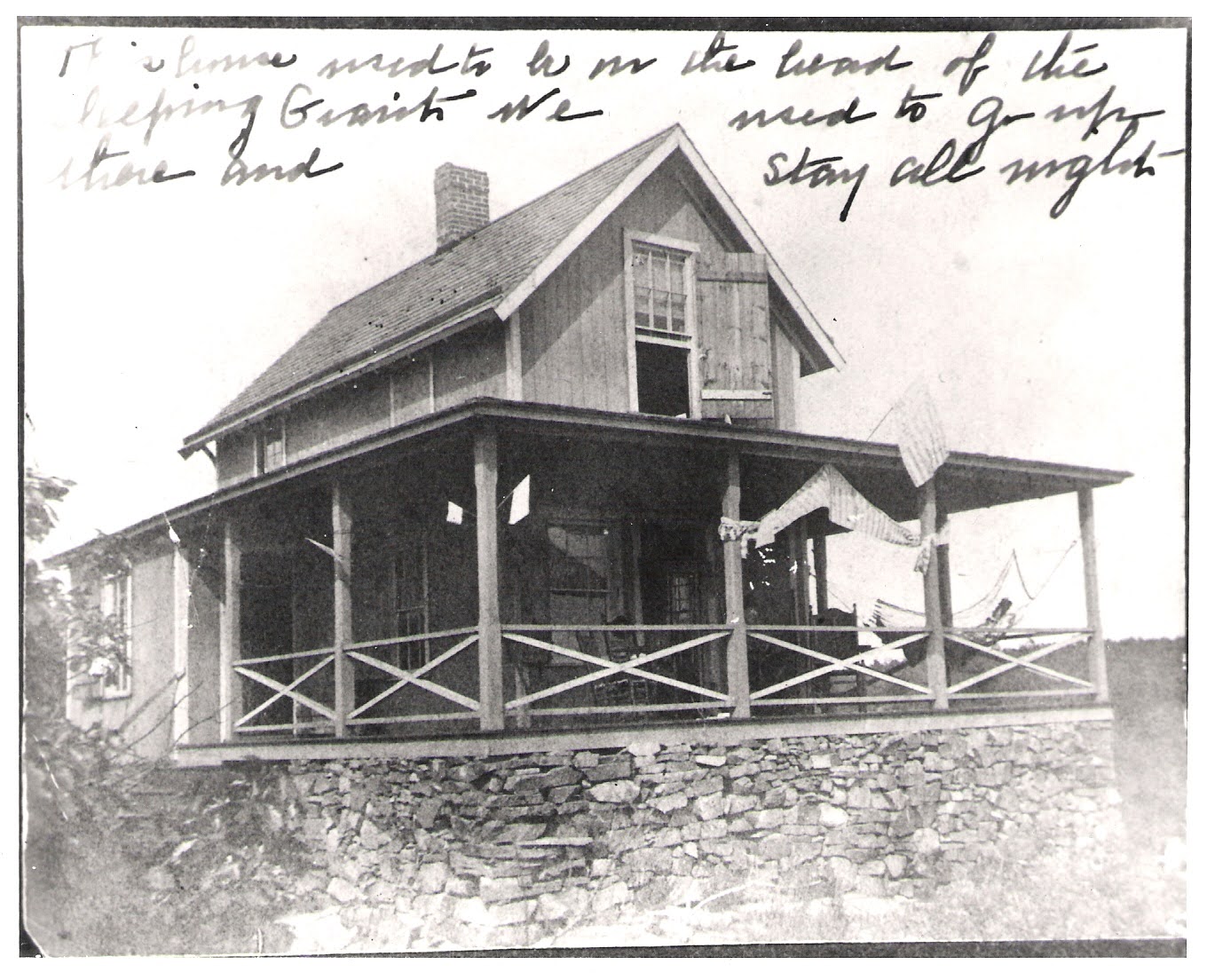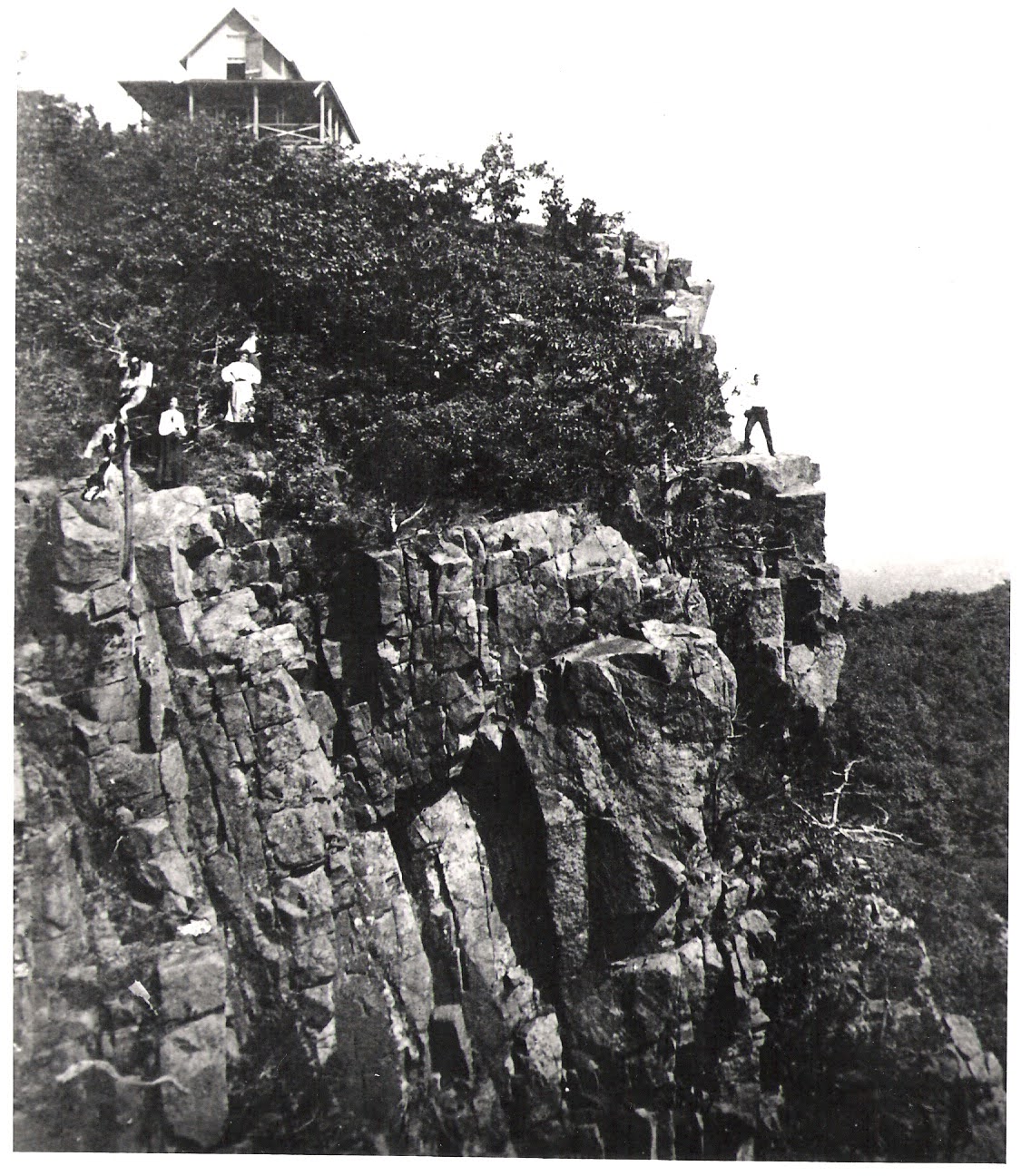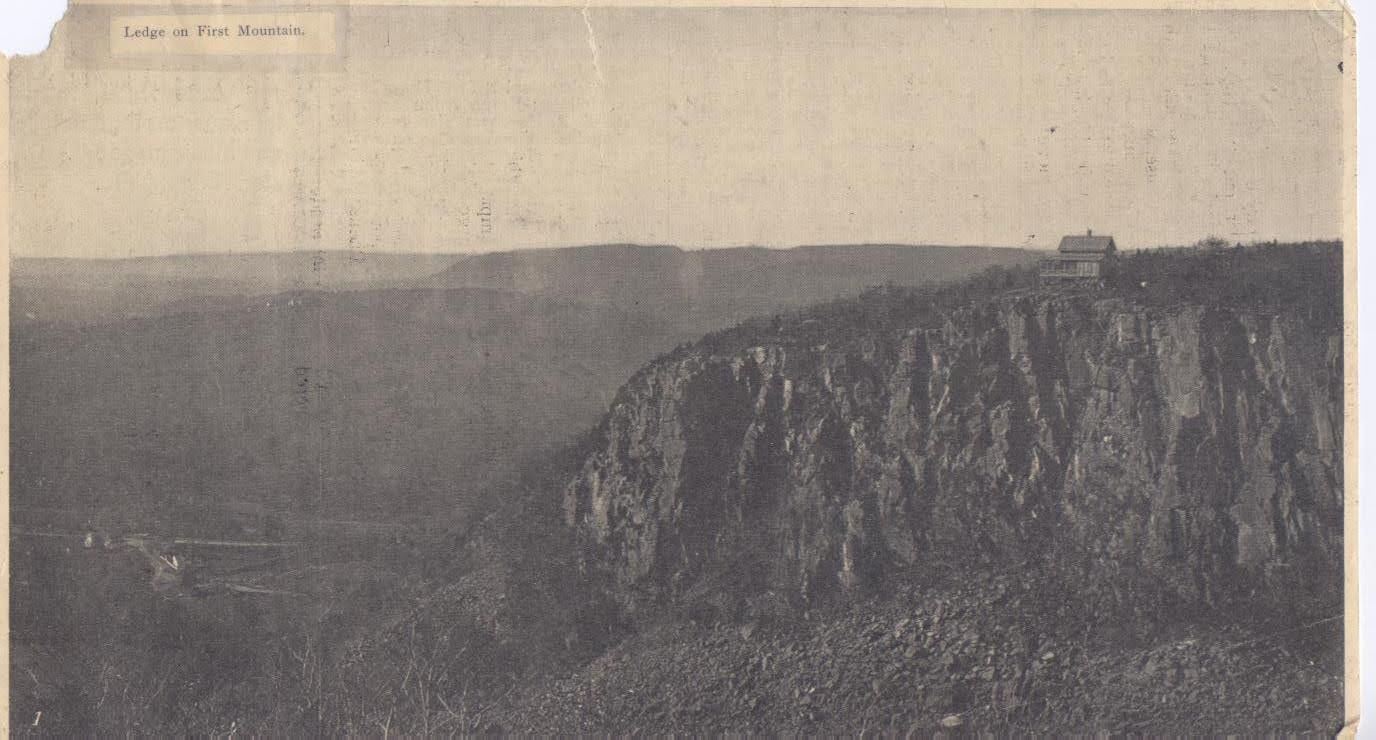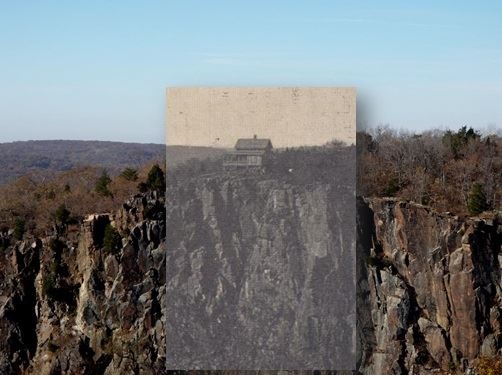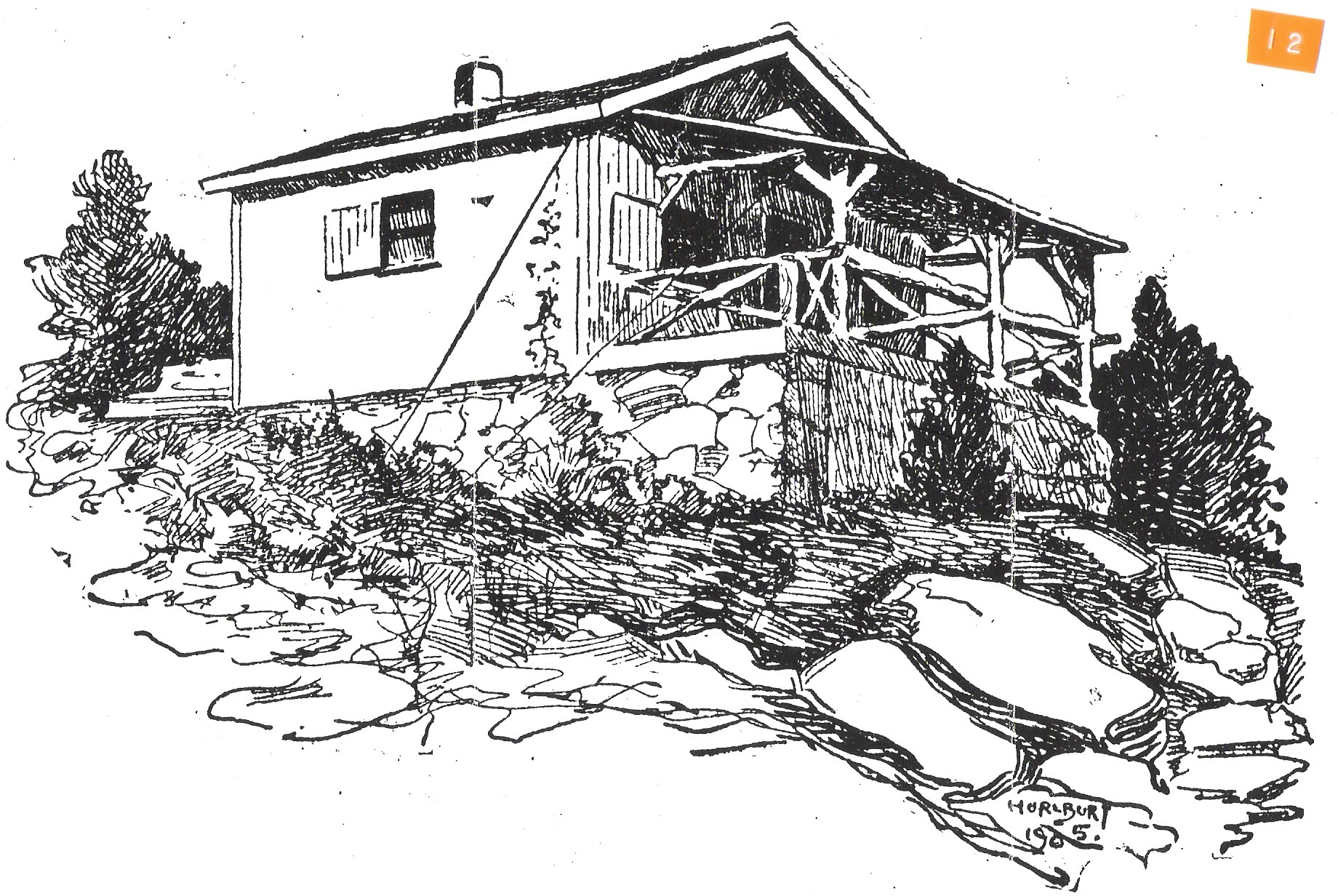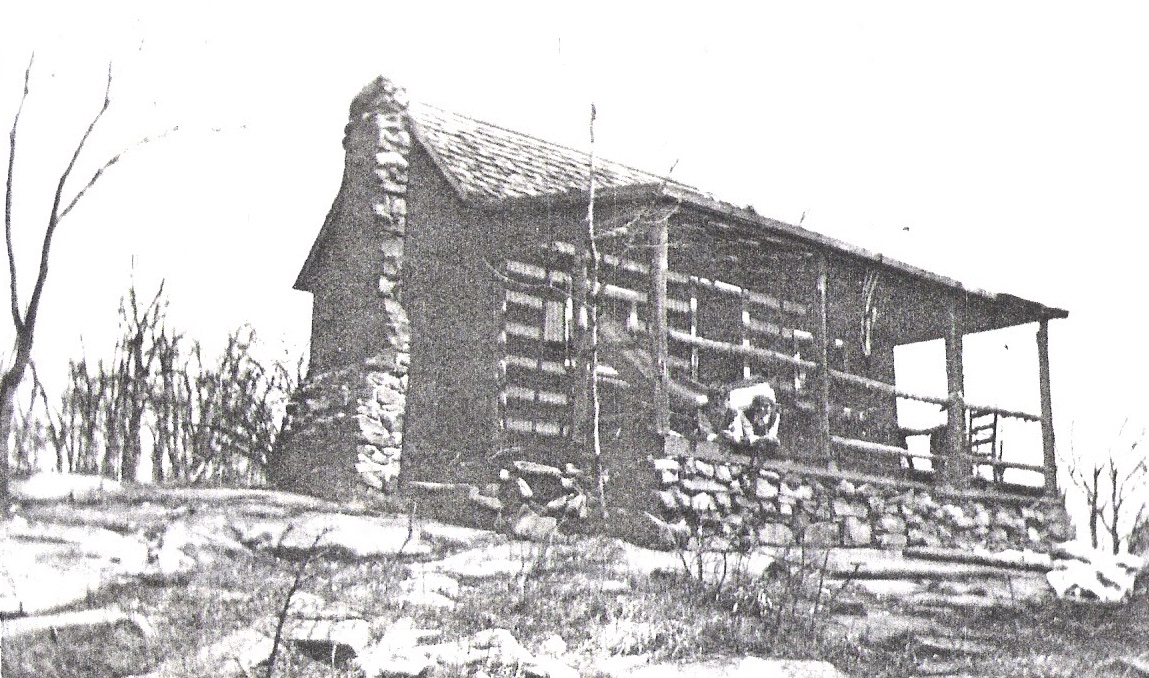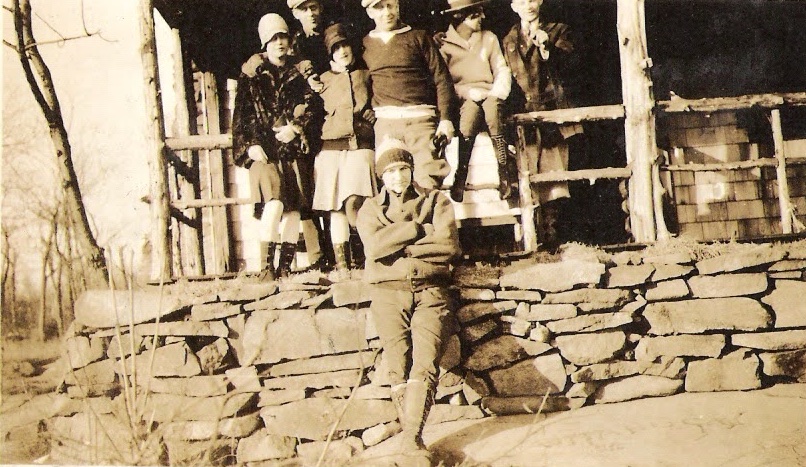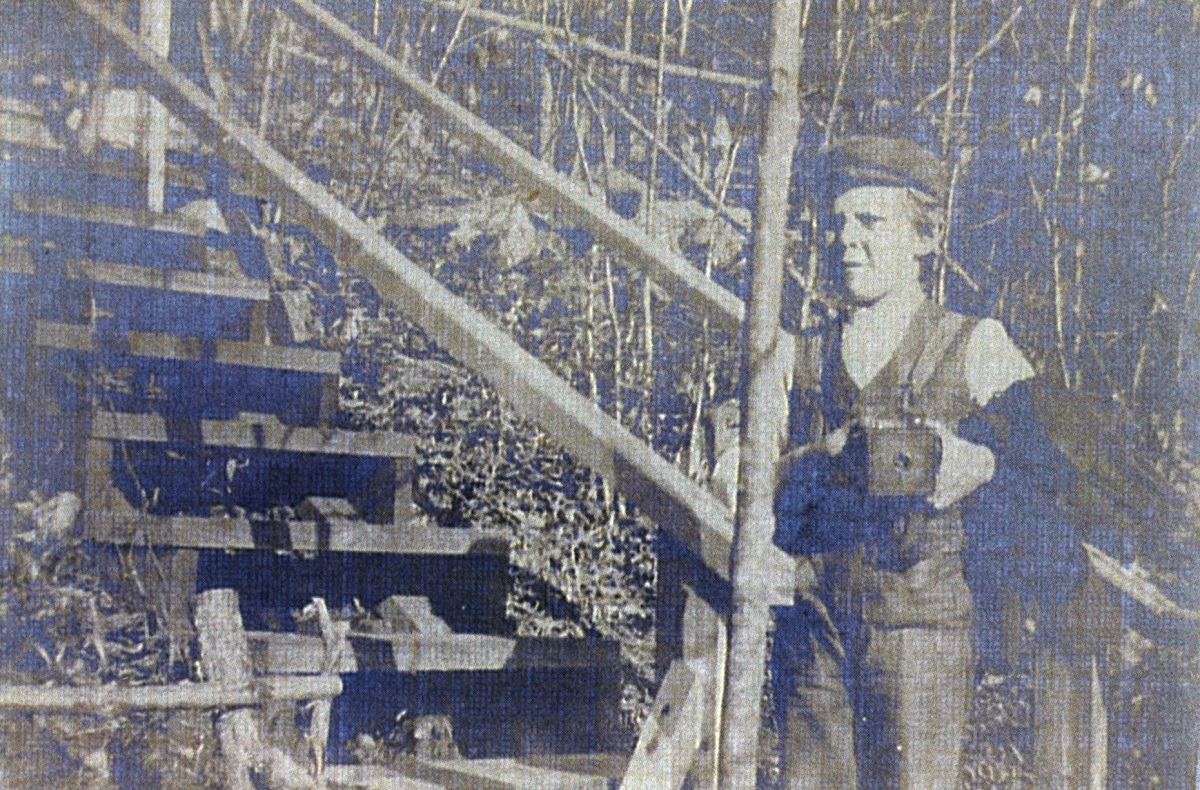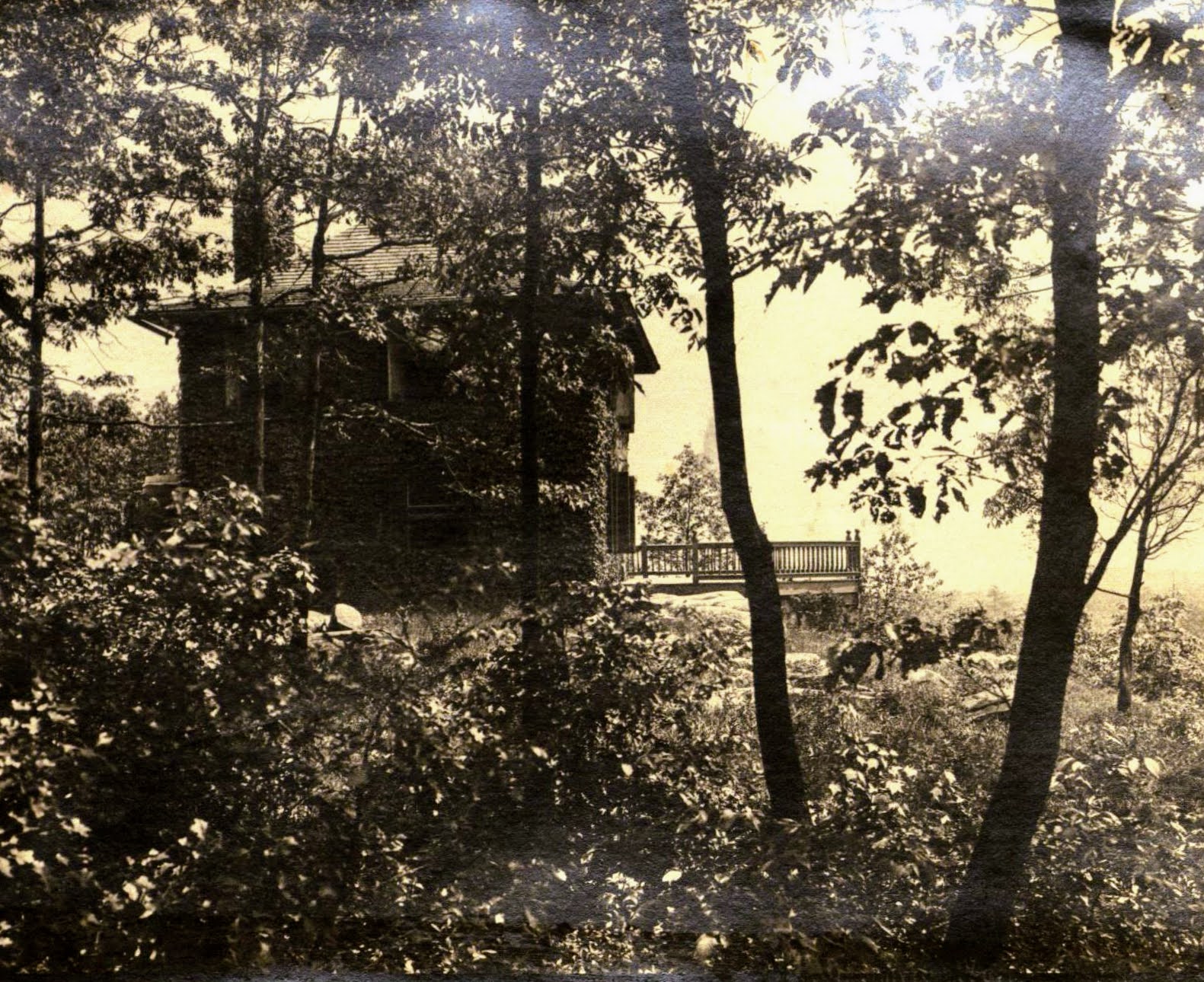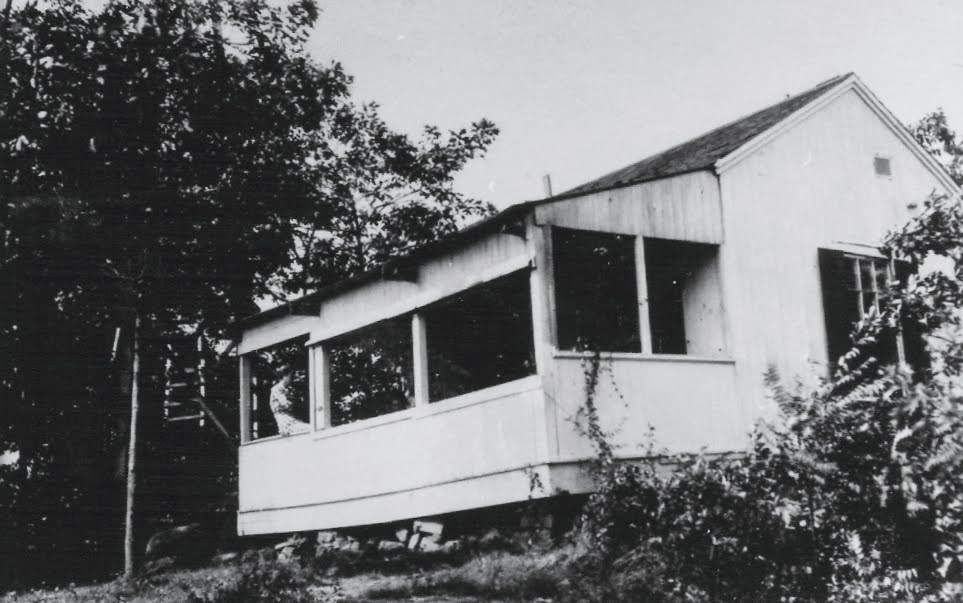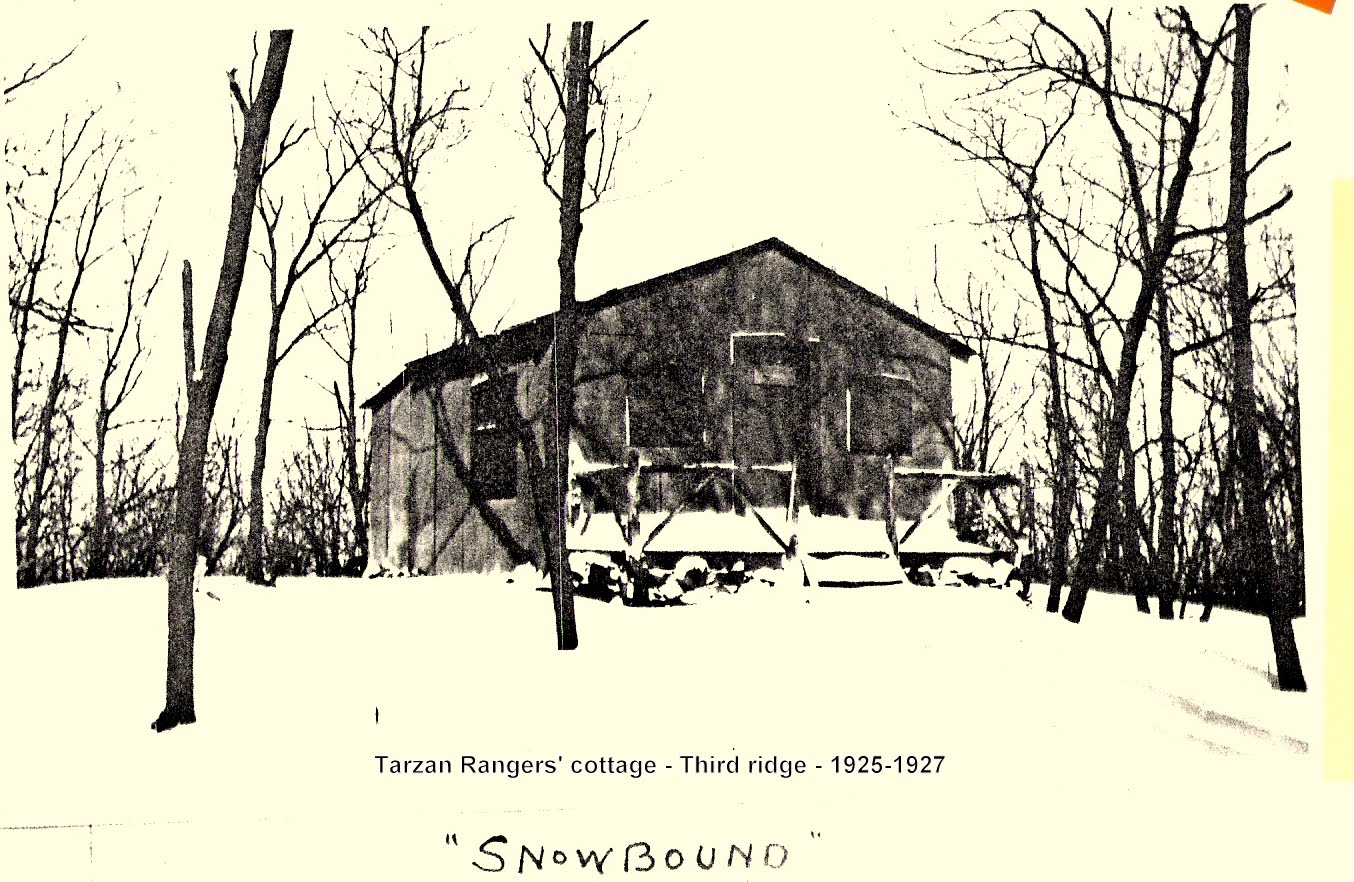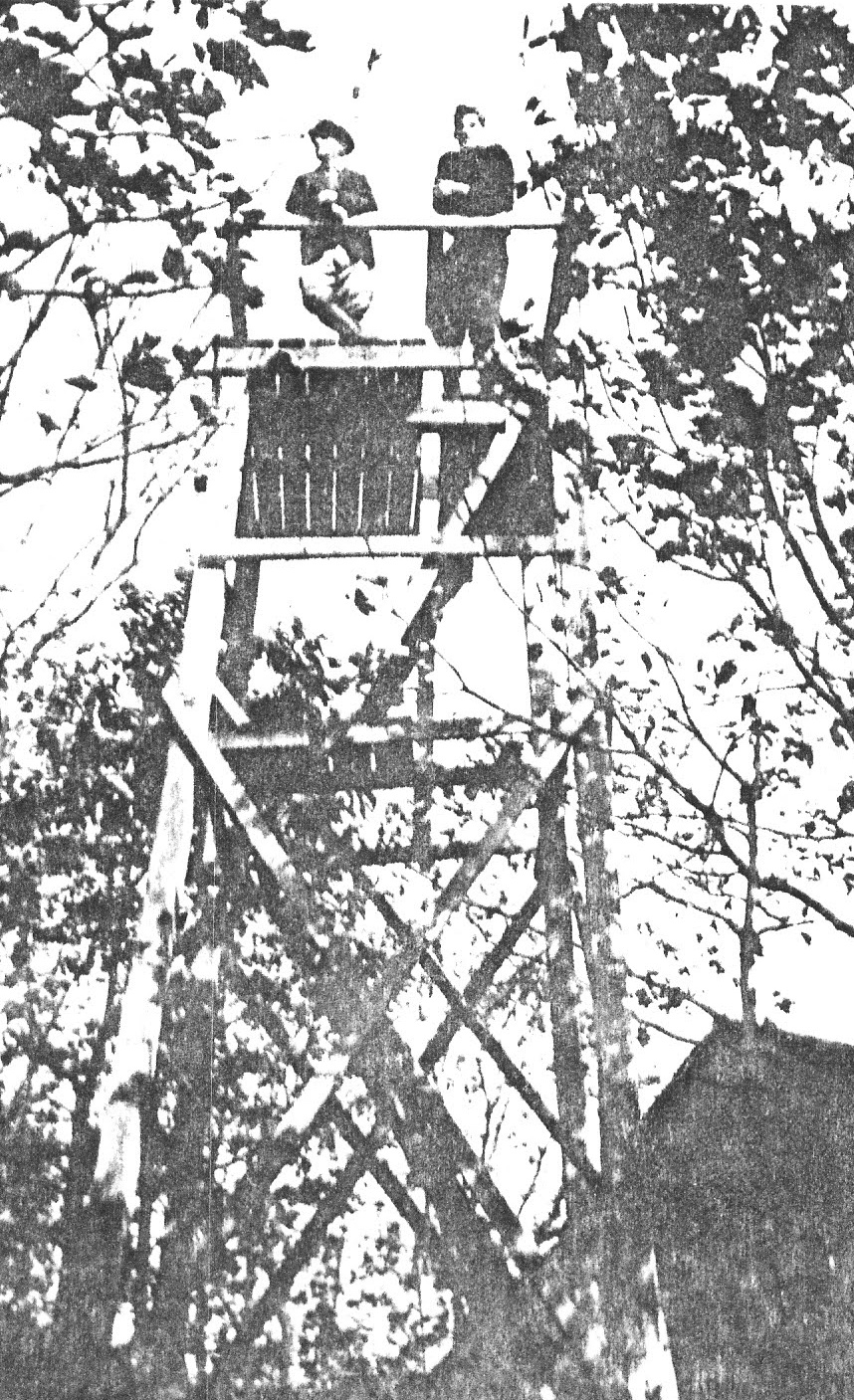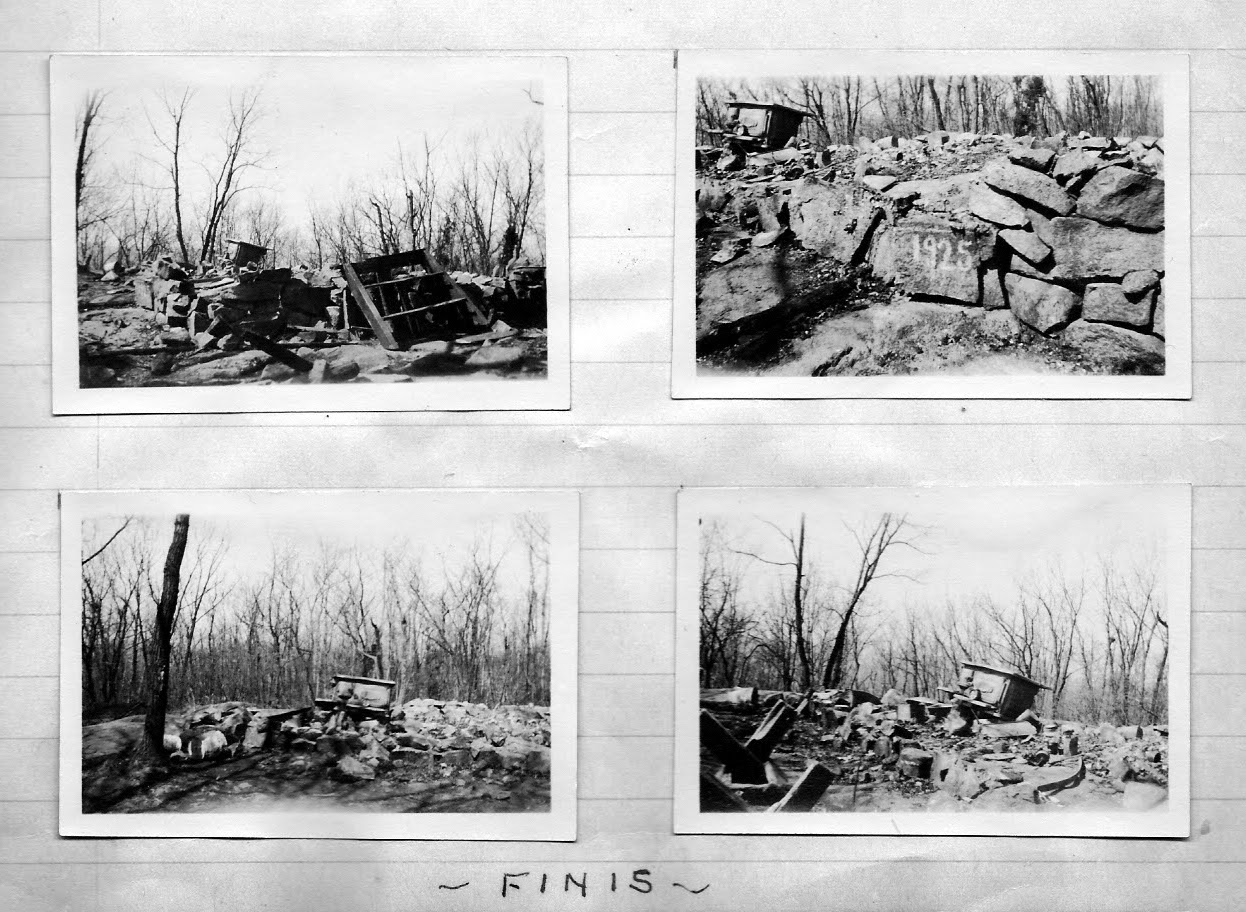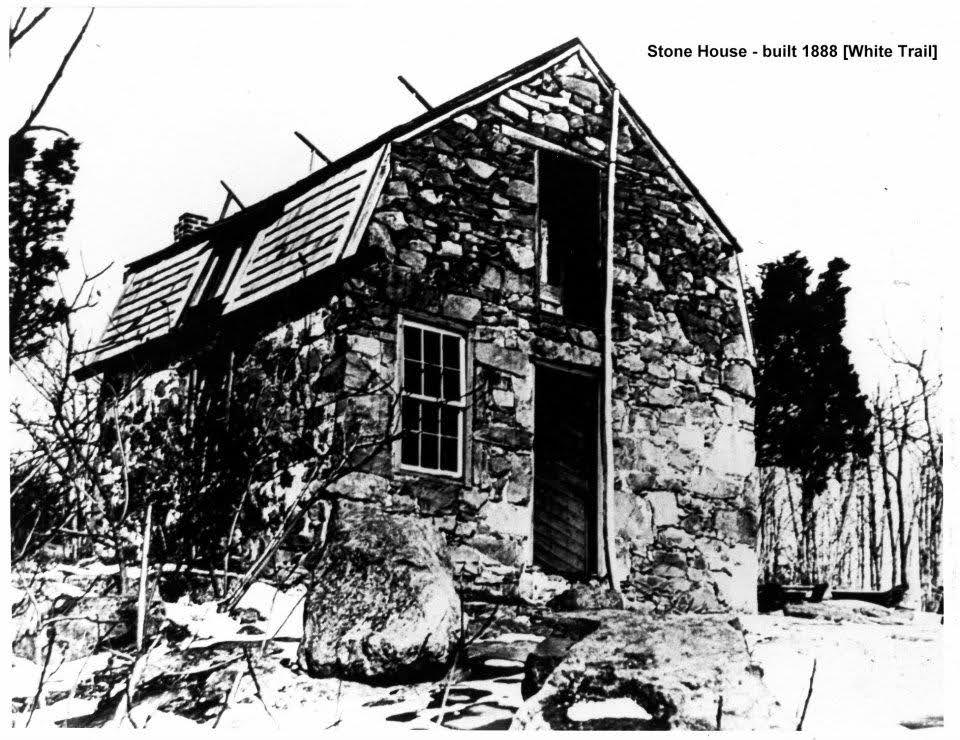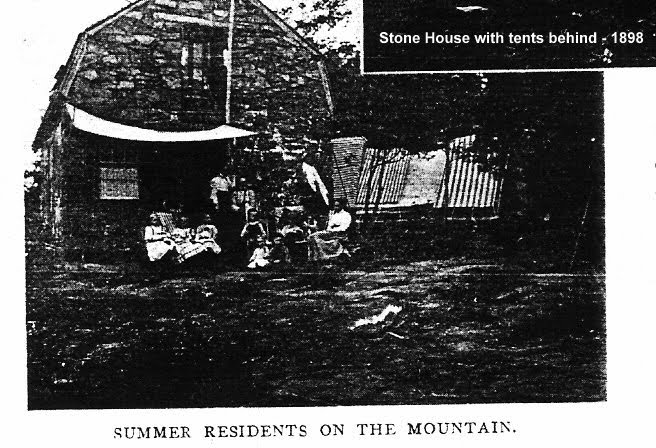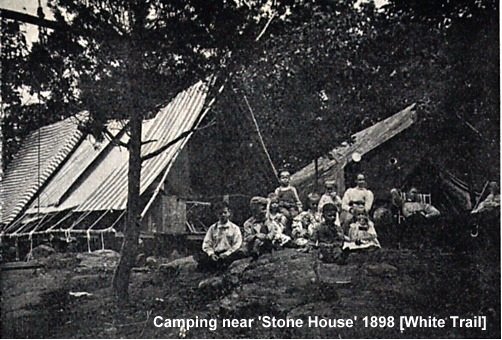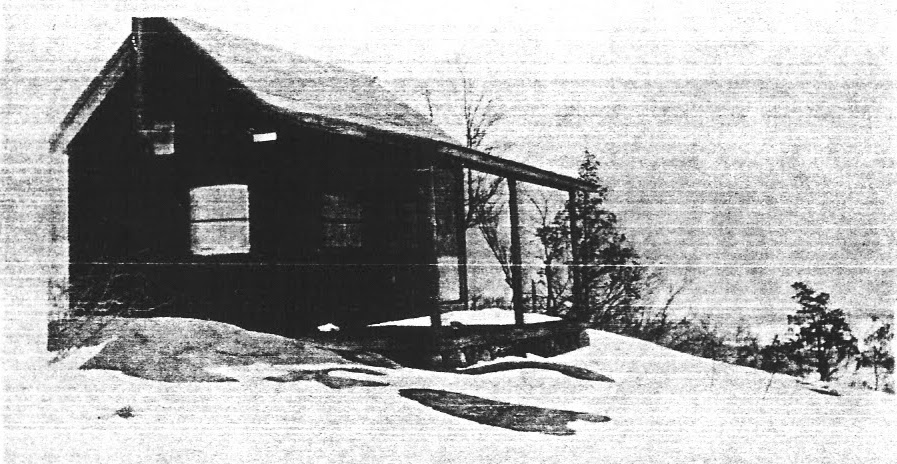Cabins on the Giant
The Sleeping Giant has always held an allure, and prior to becoming a State Park, was enjoyed by local families who constructed cottages on the ridges of the Blue Hills, as they were then called. Most were used as weekend or summer retreats, though some intrepid souls lived on the ridges year-round. Accounts recall upwards of ten cabins by the early 20th century, with many more scattered in the area around the Sleeping Giant. Plans even existed for a Blue Hills resort, but were abandoned due to the difficulty of accessing water.
The following provides a glimpse into life on the Giant at the turn of the 20th century, and is organized by its five ridges (with the first ridge being the head, second being the chest, and so on). Clicking on the images will open a gallery with additional photos and labels.
The First Ridge
As the years progressed, the cottage was subject to vandalism – an alleged reason for Cook leasing the Giant’s head for quarrying. By the time of Cook’s death, and the sale of the Giant’s head to SGPA, the cottage had all but been destroyed.
The Second Ridge
Cedarhurst cabin was built in 1899 by Frank Elwood Brown, Alec Osborn, and Clarence Stilson. Constructed on a sloping section of bedrock, the cabin was secured to the ground with cables that anchored to five iron rings (two of which are still visible). Originally, the ascent to Cedarhurst was facilitated by wooden stairs constructed through the woods. John Heaton purchased the cabin in the early 1900s, and after the wooden stairs were destroyed by a fire, improved accessibility for his guests by constructing 350 stone steps. Remnants of these steps can still be seen today along the White Trail, leading towards the Chest.
On a Rock was another cabin on the second ridge, built by Orin Dickerman. Unfortunately, much of its foundation has been vandalized or removed by hikers adding to the nearby cairn. However, a keen eye can still spot the faint traces of the chimney remains.
One other cottage, built by a man named Matthews, existed on the second ridge. No remains of the building exist today.
The Third Ridge
The Wiser Stone House was built in 1900 by David F. Weiser and Morgan Humiston. The two-story house was described as “a cottage, covered with English ivy, having a wood interior and nice furnishings”. The house was sold to the Park family, before being turned over to the park and leased by the Connecticut chapter of the Appalachian Mountain Club as a hiking cabin. This cabin was equipped for overnight stays, with an announcement in the October 1922 Appalachia Bulletin stating “There is a good supply of cooking utensils and dishes, and comfortable beds and blankets for five people. No sheets. There will probably be sleeping accommodations for more people later in the season.” Read more in THIS article from CT AMC.
By the 1930s, the Wiser Stone house was abandoned, and the stone from the house used to construct the iconic tower that still stands today.
Beyond the tower, on the blue trail, lies Chimney Rock, also known as the Devil’s Pulpit. Near this spot, Frederick Brocket and Harley Bela Mann built the Brockett/Mann cottage in 1900, as well as a neighboring fire lookout tower. Mann’s daughter, who was ill, lived there with a nurse for some time.
Nearby, the infamous Tarzan Rangers built their Hornet’s Nest cabin in 1925. The group had the goal “to promote good fellowship and good health through outdoor activities” on the Giant. Unfortunately, both the Brocket/Mann cottage and hornet’s nest were destroyed by fire on April 12, 1928, presumably by arsonists.
The Fourth Ridge
John Dickerman took a particular fancy to the fourth ridge of the Giant. In 1888, he built carriage road (now largely the southern half of the Red Cricle trail) which led to an open pavilion on the ridge top (now one of the viewpoints on the White trial). On July 4th, Dickerman invited residents from the surrounding community to join him for a picnic atop the fourth ridge. A total of 200 people travelled in 50 carriages to join the picnic, where they were served ice cream.
Soon thereafter, Dickerman built Stone House, the first dwelling on the giant. It seems not to have received much use by the Mrs. Jamison for whom he built the cabin. WPA workers who constructed the tower may have stayed in this house during the multi-year construction project.
Other fourth ridge cabins included the Bell Cottage built in 1889 by Reverend Robert Bell, a former Mt. Carmel minister. The Bell family vacationed there every summer for 12 years and would raise the American flag to indicate they were home.
